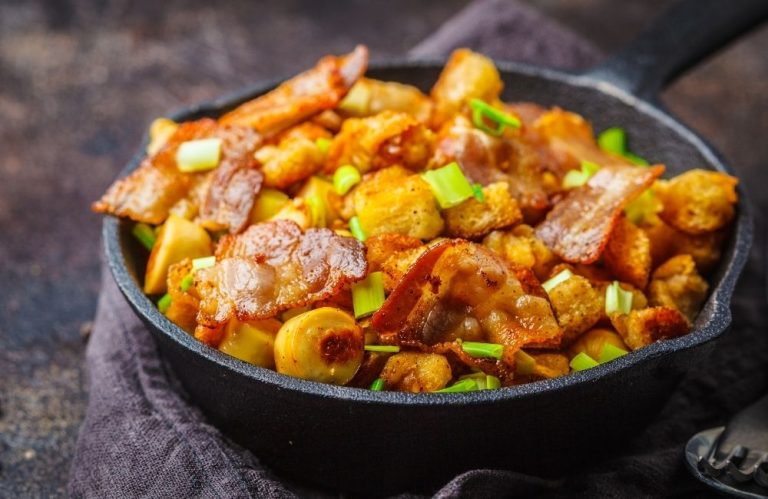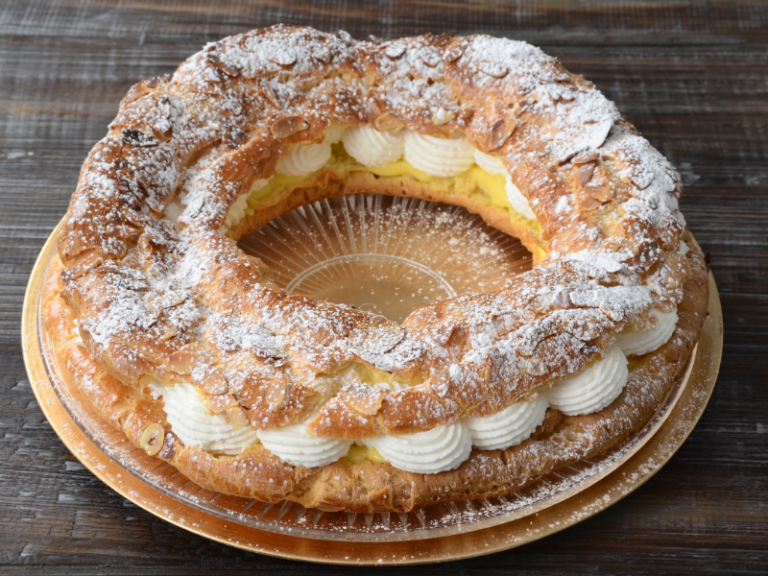Lithuanian Food: 12 Traditional Dishes of Lithuania
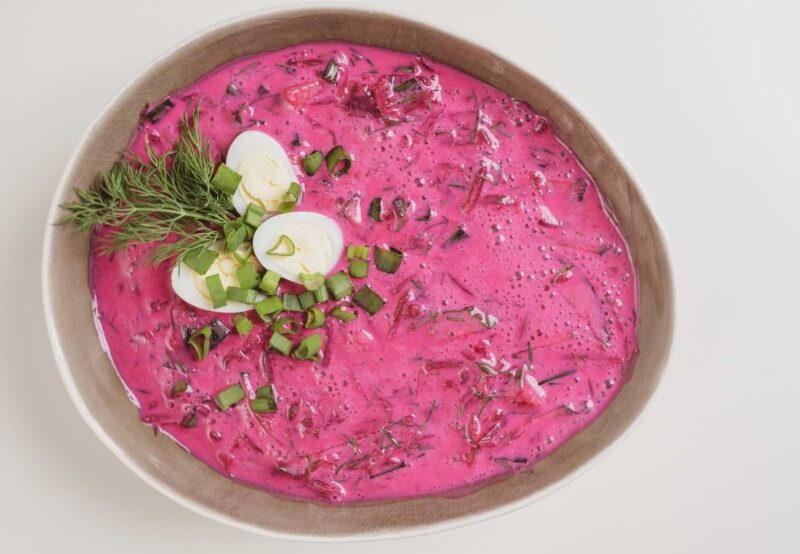
Lithuania is a landlocked country in the heart of the Baltics, bordering Latvia, Poland and Belarus. Boasting outstanding architectural diversity, Lithuania is a home to scenic landscapes, abundant forests, flatlands, lakes and marches. The culture and art of Lithuania is heavily influenced by a centralized aristocratic catholic Poland.
Lithuanian dishes rely heavily on root vegetables (potatoes and beetroot), meat, and dairy products. Like much of Eastern European cuisine, the cuisine can be stodgy but hearty and warming which is particularly important during harsh winter months.
Cepelinai
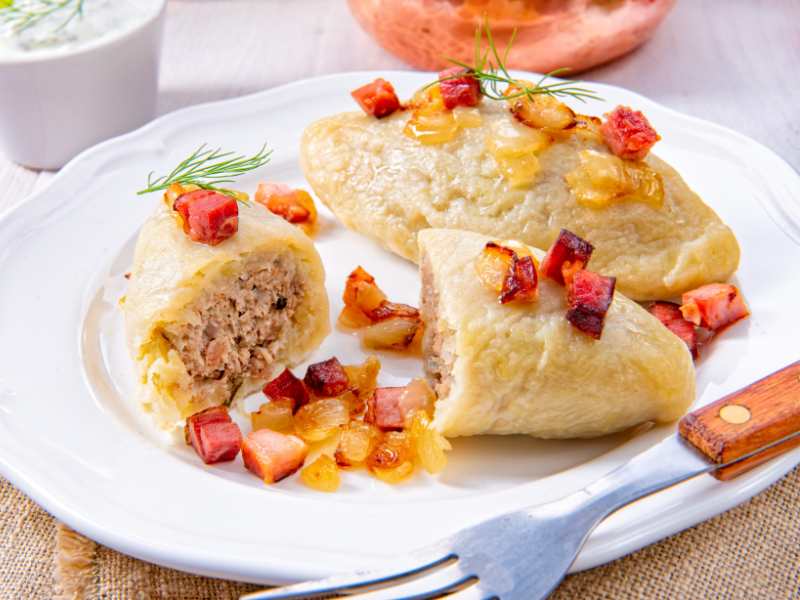
Cepelinai are dumplings stuffed with a pork and onion mixture and smothered in creamy bacon and mushroom sauce. Cepelinai is considered the national dish of Lithuania and is a point of comfort and pride, as cepelinai take a careful hand to form correctly.
Spurgos
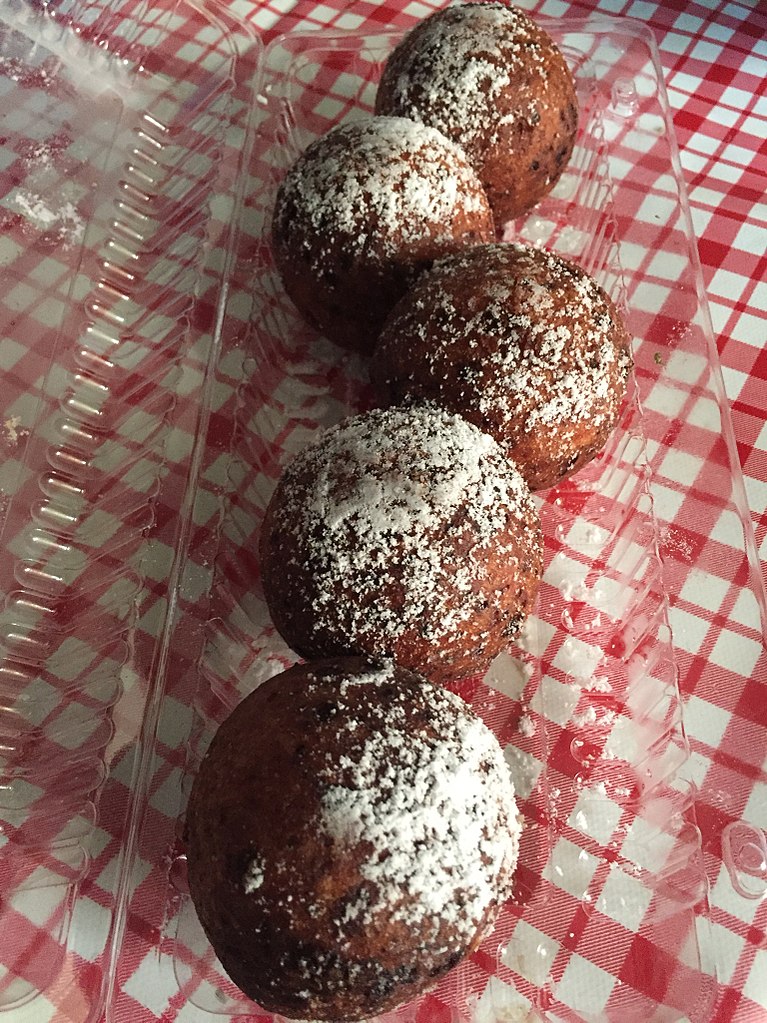
Spurgos are the Lithuanian version of donuts, a snack that most likely came to Lithuania from Holland. Some Lithuanian spurgos are whole whereas others have the classic hole in the middle. Invented in 1847 by the Dutch sailor, Hanson Gregory, so that the dough is also fried in the center. To do this, he pierced the bun with the lid of a salt shaker.
Varškės Apkepas

Varškės apkepas are small cakes made from a dough of flour, eggs and sugar, filled with the traditional soft Lithuanian cottage cheese made from pressed curd. The cakes are fried in oil and served with wild berry jam. Curd cheese is a staple with a long tradition in Lithuania and is protected by the food standards of the European Union.
Šaltibarščiai (Cold Beetroot Soup)
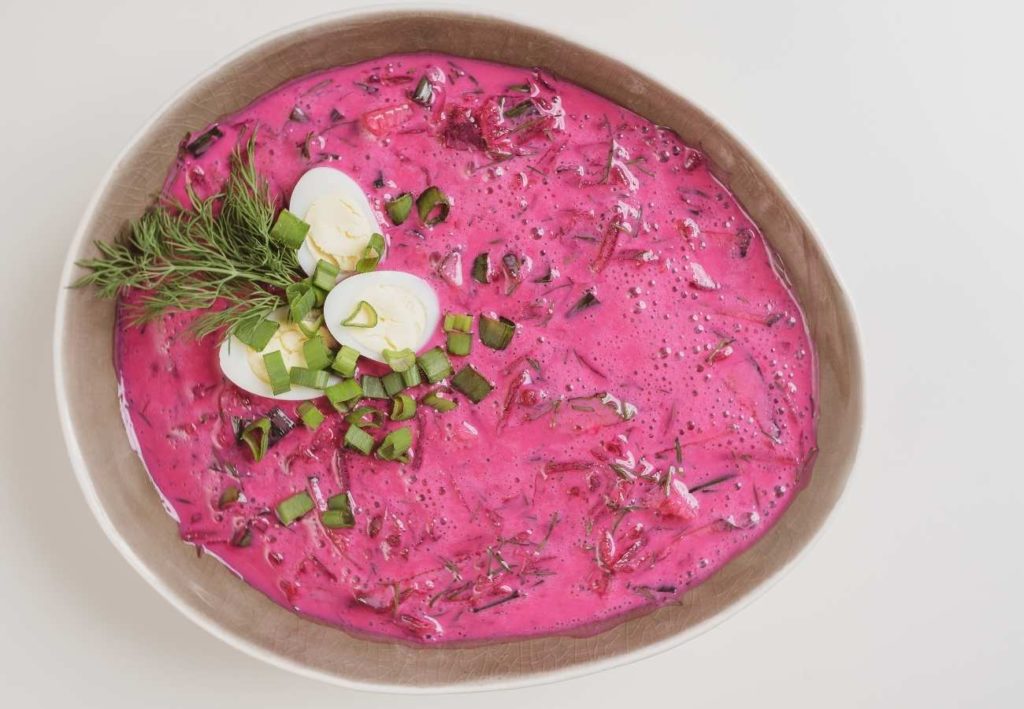
Šaltibarščiai is a cold beetroot soup that is seasoned with salt and pepper and sprinkled with a little dill, giving it a final touch of kefir, sour milk that shepherds traditionally make by storing dairy in leather bags. It is the most popular dish of the benign Lithuanian summer, also common in Latvia, Poland, Russia and Belarus. It comes from the Jewish cuisine of Central and Eastern Europe.
Bulviniai Blynai (Potato Pancakes)
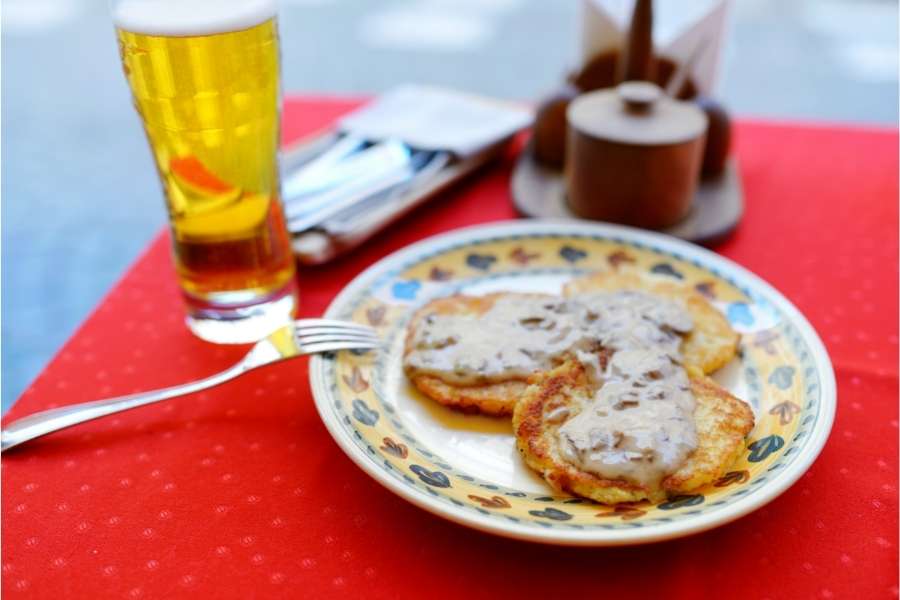
Bulviniai Blynai is a kind of fried potato pancake that is made with grated potatoes or mashed potatoes and minced onion. They are dipped in beaten eggs and fried in oil or butter until golden brown on both sides.
Different regions and towns of the country have their own versions, incorporating other vegetables and sometimes adding the famous Lithuanian cottage cheese. They are served with sour cream, jam or apple sauce. The recipe originated in the Jewish cuisine of Central and Eastern Europe, being prepared by the Jews during the Hanukkah holiday.
Kepta Duona (Fried Bread)
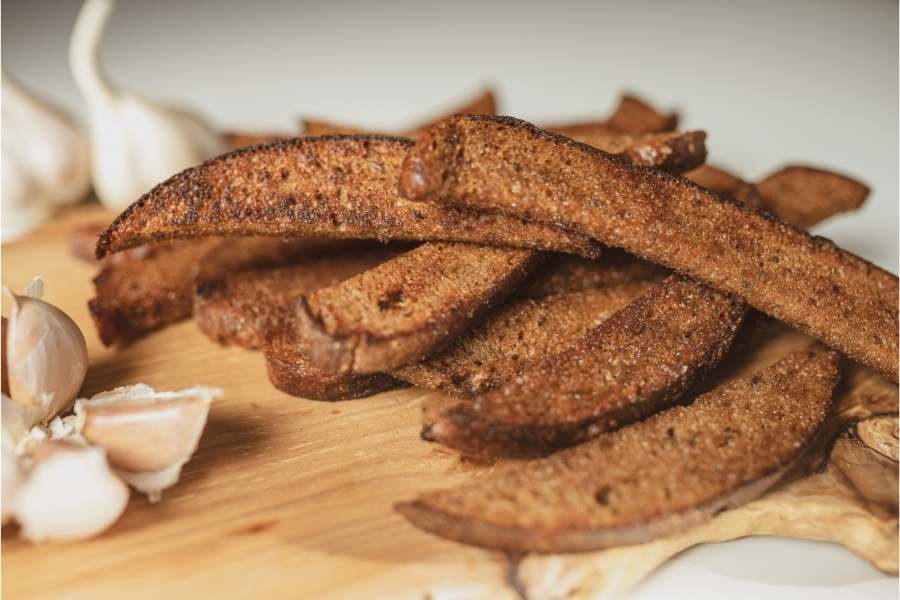
Kepta Duona is a simple snack that consists of the typical black Lithuanian rye bread fried in oil and garnished with generous amounts of garlic and salt. The fried bread is often topped with a cheese sauce and served either on its own with a beer or as a side dish to soups and other Lithuanian dishes.
Balandeliai (Stuffed Cabbage)
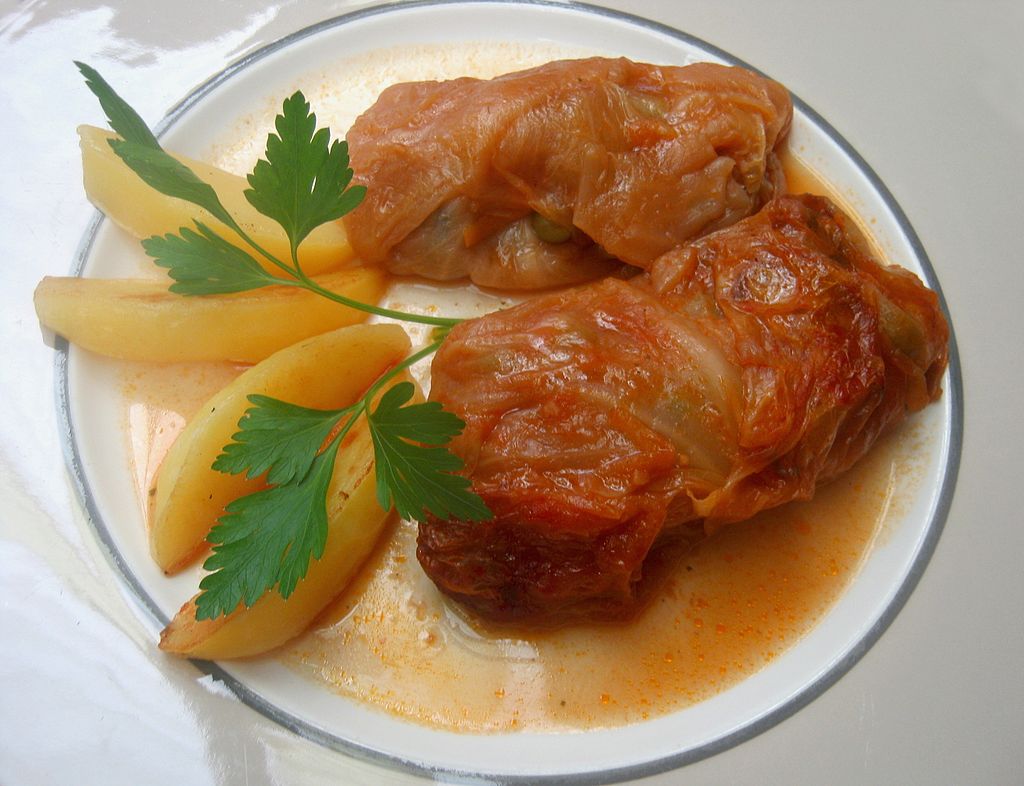
Balandeliai is a dish consisting of a filling of minced meat, rice, onion and other vegetables, wrapped in cabbage leaves and cooked in a pot. The dish is covered a pureed tomato sauce along with the cooking broth of the meat used, generally beef or pork. It is served with boiled potatoes or with Lithuanian black bread.
Although this dish originated in Middle Eastern cuisine, the recipe varies from family to family and from chef to chef. In Lithuania it is popular at festivals, weddings, celebrations and Christmas meals and can easily be found at many roadside eateries as well as big restaurants.
Smoked Fish
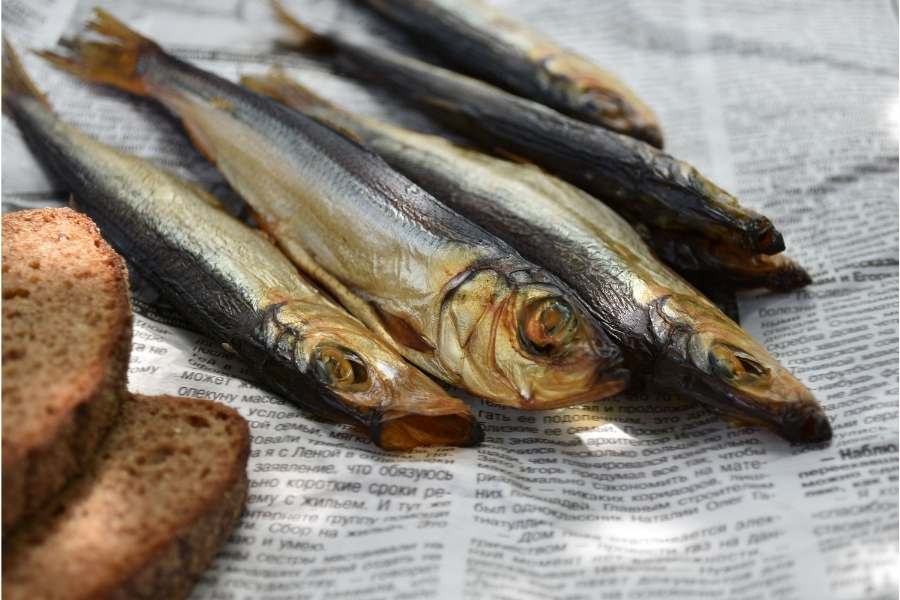
Fish is a staple ingredient in Latvia, Lithuania and Estonia, where salted or smoked fish are widely eaten and frozen fish, fillets, surimi and preserved fish are exported. In Lithuania it is typical to eat smoked fish wrapped in newspaper on the beach. The most common species to smoke are herring, bream, mackerel, eel, salmon and carp.
Sakotis (Tip Cake)
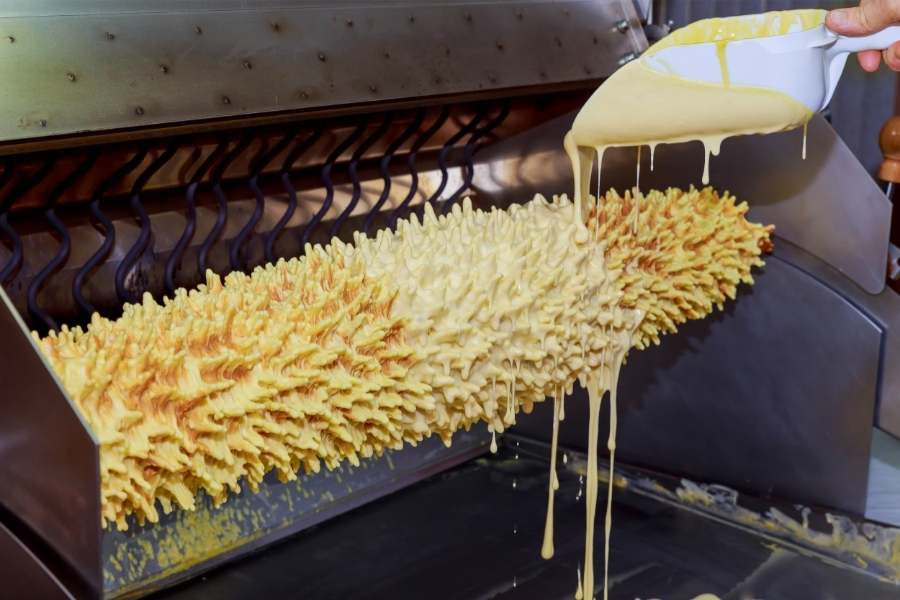
Sakotis is a Lithuanian version of the tree cake. It looks like a miniature pine in which the tips resemble the needles of the tree and is served on weddings and special dates like Christmas and Easter.
The tips of the cake, which have a hollow center, are formed by the dripping of the dough as the cake rotates on a spit during baking. It is made in various sizes and has a mild flavor and pleasant aroma.
This cake invented in the 15th century in monasteries that kept the recipes secret. It arrived in Lithuania at the beginning of the 20th century when it began to be elaborated in the abbeys. One of its characteristics is the large amount of eggs (up to 50 units per kilo of flour) that are needed to get the correct dripping of the dough.
Kugelis
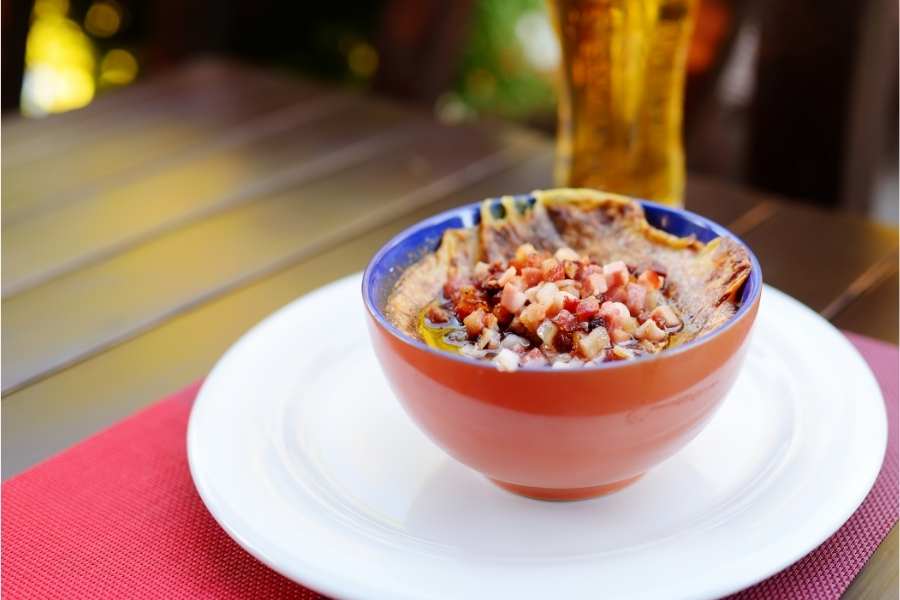
Kugelis is a baked potato pudding and is one of the national dishes of Lithuania. In the Lithuanian ethnographic region of Dzūkija (Dainava), it is also known as “bulvių plokštainis”, which literally means: “flat potato dish”.
In addition to potatoes, Kugelis contains milk, eggs and onion, with pepper, salt and marjoram or bay leaves as seasonings. It is usually eaten with cranberry jam, apple sauce, sour cream or crunchy crumbed fried bacon, both as a main course and as a side dish. It is similar to Belarusian potato babka and German kugel.
Skilandis
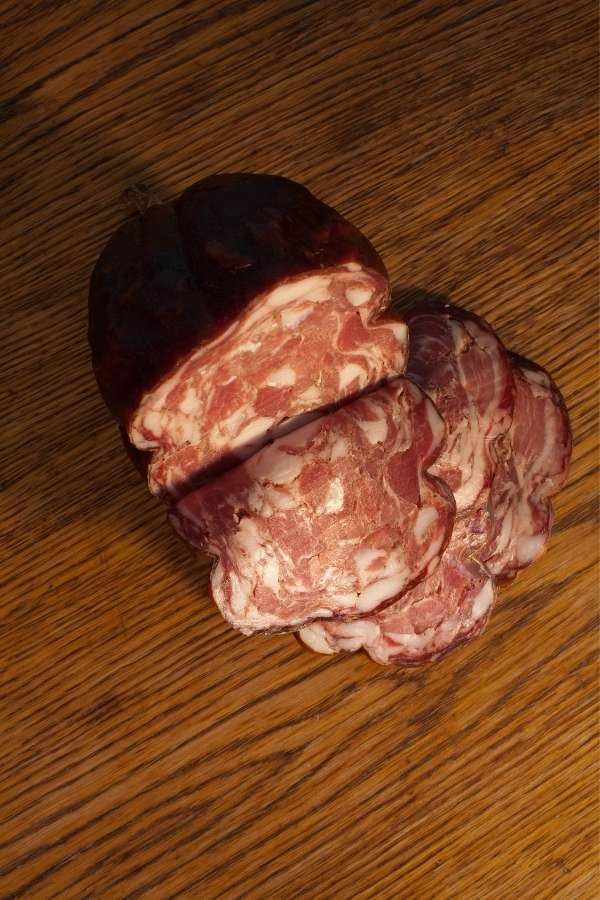
Skilandis is a sausage similar to a salami, a traditional delicacy that was mentioned in the 16th century in documents of the Grand Duchy of Lithuania. The popular smoked meat product is prepared by Lithuanians with pork, while industrial skilandis also carry beef.
It is served as a summer meal with guests and it is spicy, salty, with a bitter touch and with the aromas that communicate its ripening and drying processes. In skilandis, unevenly distributed pieces of fat are visible in lean meat.
Kasha
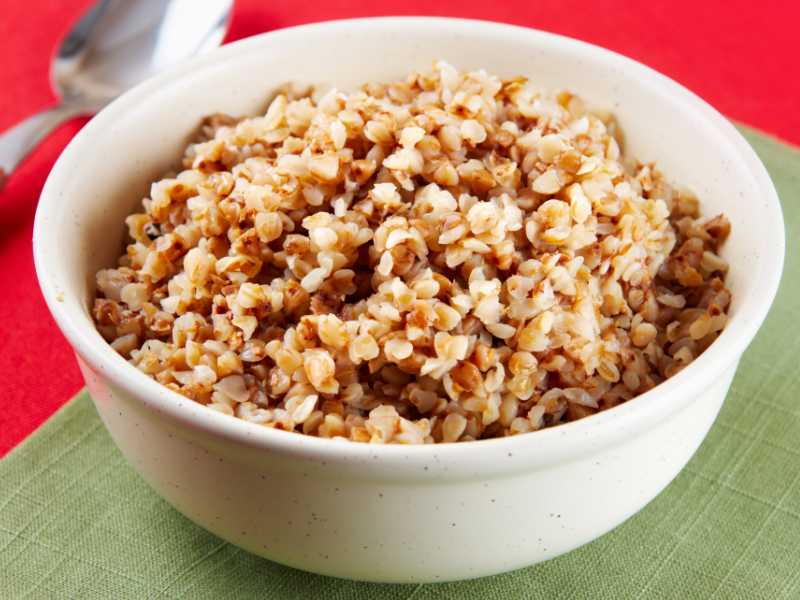
Kasha is a grain that is particularly popular in Eastern Europe, usually made from buckwheat groats. The buckwheat is first toasted then cooked in water or broth until they are tender. They are flavored before eating.
Kasha is used in numerous ways. It is eaten as a main meal when served as a breakfast cereal, topped with hot milk, yogurt, honey and a variety of nuts and berries. It is also served as a side dish and can be used for stuffing meat. It is widely consumed and eaten with meat or added to a variety of dishes like soup.


